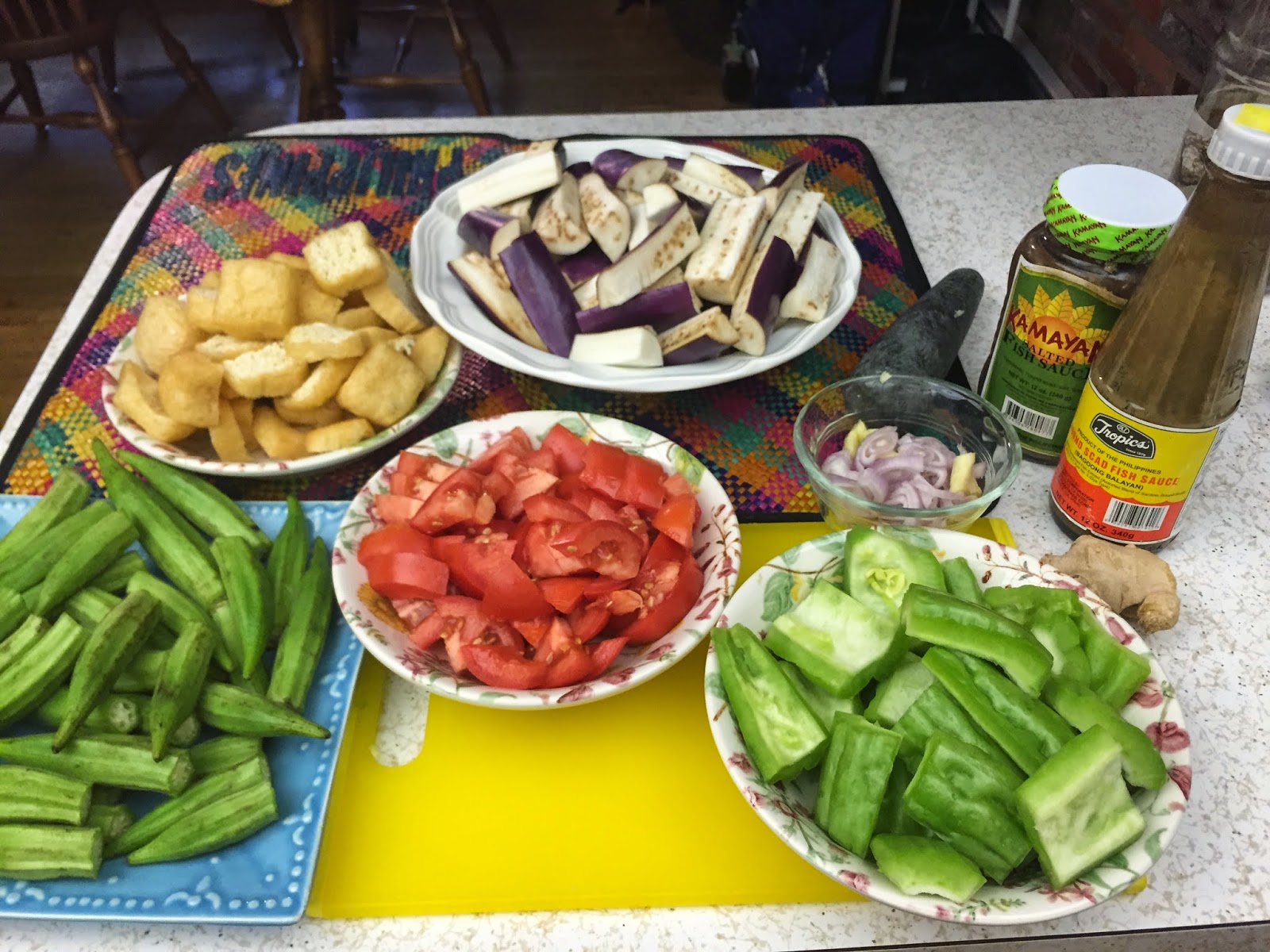Tokwakbet was coined by Chef Rafi from two Filipino words "Pinakbet" the national dish of the Ilocano people of Northern Luzon, and "Tokwa" (tofu). In the case of this dish, puffed tofu, made to look like "bagnet" or deep fried pork bellies.
We must remind you the authentic way to cook pinakbet is to use fermented fish paste (munamon) instead of shrimp paste (alamang/armang). Alamang is used by the Tagalogs for a similar dish called "bulanglang". The color and flavor is quite different and it really should not be posing as pinakbet. So many restaurants with Tagalog chefs try to pass their bulanglang as "pinakbet", even adding pumpkin, MSG, and stir frying with garlic! HERESY!
Well, it's also heresy to substitute pork and/or shrimp with tofu to appeal to vegetarians, but the munamon (anchovy paste) with tomatoes and ginger in broth thickened by okra and eggplant should make up for that.
This is how vegetables should be cut for pinakbet or tokwakbet:
And remember that vegetables must be layered in the correct order so by the time the dish is cooked no vegetable becomes too mushy. Eggplant mushes up very fast so put it in last. The tomatoes should be added with the ginger to help make the broth. Bittermelon (paria/ampalaya) takes the longest to cook. Don't forget to remove the pulpy seeds of the bittermelon.
Remember that once the bittermelon is added to the dish. Do not stir the ingredients. That will cause the tokwakbet to become bitter. Shake it don't stir it!
Bittermelon may take a while to get used to but it is a very healthy vegetable and has been noted to help relieve arthritis and diabetes.
Anchovy paste must be strained before use so it does not itch the throat. We will show you how to do this in the video. This is used instead of salt. There is no need to add salt once the anchovy paste and water are added. Adding too much salt is bad for blood pressure.
A major ingredient of pinakbet that is not present in our tokwakbet is long Asian string beans called "sitaw" in Tagalog or "utong" in Ilocano. We propose that if you want to add utong to the tokwakbet, it should be called by another name, "tokwatbet" to help differentiate the dishes.
These are the ingredients you will need to make this dish - note the hiding ginger by the tomatoes and the small Philippine onion (lasona). These small onions are much more sharp and flavorful than the large white ones ordinarily used in Western cooking. It is fine to leave out the onions but NOT the ginger and anchovy paste. You will see in the video that we stir fried the onions, that is because without pork there is no fat for flavor so we used the oil as a healthier substitute. With genuine pinakbet, no stir frying is involved.
Note that the tofu that we use is spongy. This will better absorb the flavor of the broth.
Ready to try cooking this dish? Don't eat the flower. We just put that there for decoration. But you can add katuday if you like (below). We'll leave that for another episode.
Come see us next week at ChefRafi.com for more!






No comments:
Post a Comment